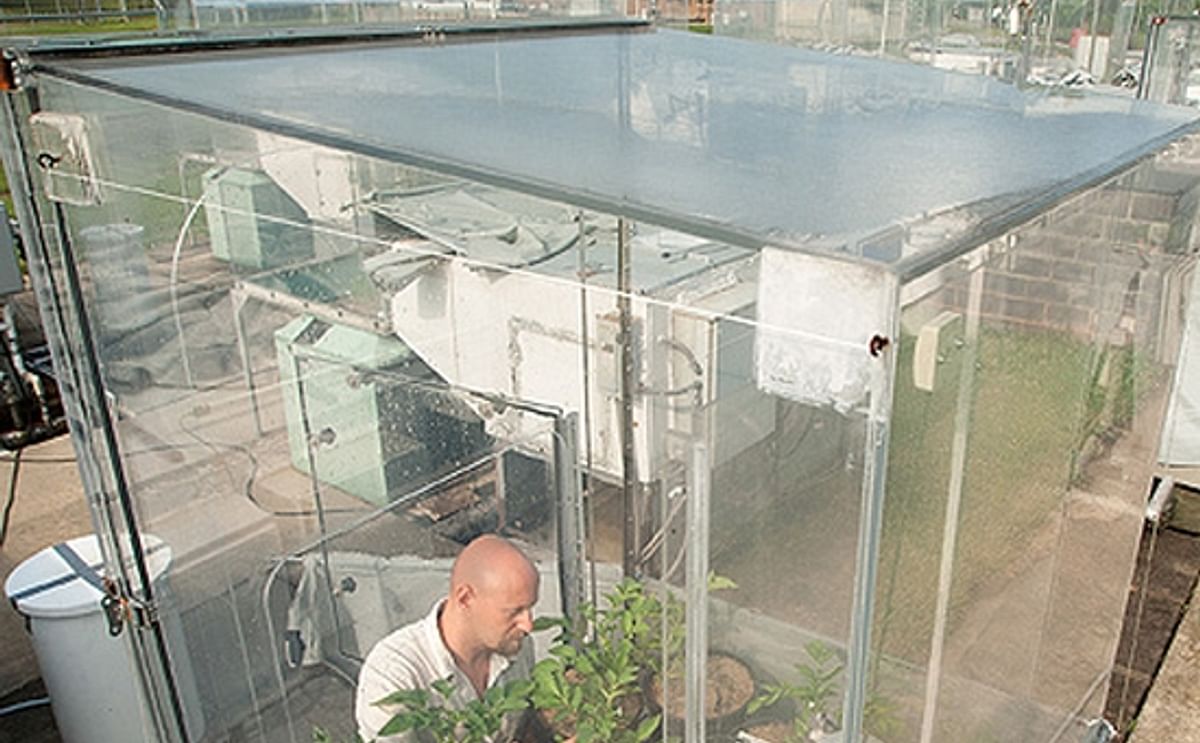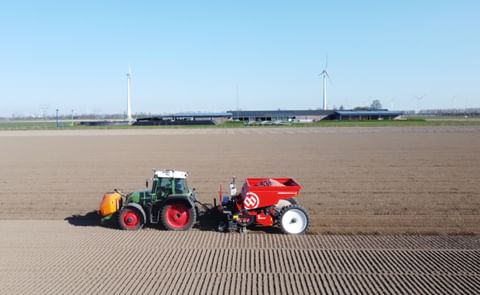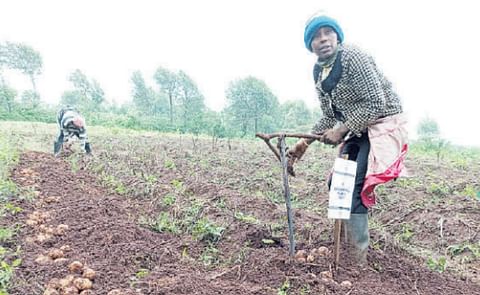New research shows that potatoes—often cultivated as a rainfed crop with little or no irrigation—are still the go-to tuber when times get tough.
Agricultural Research Service (ARS) agricultural engineer David Fleisher and his colleagues conducted studies to measure how potato plants would respond to elevated atmospheric carbon dioxide levels and the increasingly erratic rainfall patterns expected to result from global climate change. ARS is USDA's chief intramural scientific research agency, and this work supports the USDA priority of responding to global climate change.
The team conducted two outdoor chamber studies to evaluate effects of short-term drought cycles at current and elevated carbon dioxide levels. The studies were conducted using soil-plant-atmosphere research chambers that provided precise control over carbon dioxide levels, air temperature, irrigation and humidity. The chambers contained sensors that monitored air, soil, and canopy temperatures, relative humidity, and solar radiation above and below the canopy.
The quantity of solar radiation in the first study was about twice as much as in the second. Having two different study periods allowed the scientists to evaluate how variations in solar radiation during the drought periods affected plant response. In both studies, 11-day drought cycles were applied before tuber formation began and around 10 days after tuber formation began.
The researchers observed significant differences in plant response that they attributed to the variation in solar radiation, which in turn affected plant water-use efficiency and dry matter production. With all other growth factors being equal, the plants in the first study had a 30 percent to 200 percent increase in total dry matter production, depending on carbon dioxide levels and water availability.
The team also noted that the cyclic droughts resulted in lower levels of dry matter and leaf area production. They concluded that drought stress before tuber formation probably enhanced the future delivery of carbon, water and plant nutrients to tubers instead of to stems or leaves—and that this response increased under elevated carbon dioxide levels. Averaged across all drought treatments, tuber yield from plants growing under elevated carbon dioxide levels was as much as 60 percent greater than tuber yield from plants growing under current carbon dioxide levels.
“We found that, except for the most severe droughts, tuber yields under elevated carbon dioxide levels exceed tuber yields under current carbon dioxide levels,” Fleisher says. “This could be in part because plant water-use efficiency can increase under elevated carbon dioxide levels.”
Fleisher emphasizes that this investigation was a chamber study and not a field study. But the results suggest that growers could adapt to changing atmospheric carbon dioxide levels by ensuring that potato plants are adequately irrigated during crucial pre-tuber development stages. He also thinks data from the study could be used to test crop models and other tools used to assess drought management strategies under elevated carbon dioxide conditions.
Fleisher, who works at the ARS Crop Systems and Global Change Laboratory in Beltsville, Md., published the study results in Agricultural and Forest Meteorology.
- News
- Potato Supply chain
- Potatoes Show Promise...

February 03, 2014
Source
Agricultural Research Service (ARS)
Like to receive news like this by email? Join and Subscribe!
NEW! Join Our BlueSky Channel for regular updates!
Related Topics:
Highlighted Company
Related News

April 09, 2025
Biofresh Safestore Marks 21 Years at Strategic Potato Storage Day

April 06, 2025
PotatoEurope 2025 Demonstration Fields Planted in Excellent Conditions at Wageningen University & Research (WUR)
Latest News
Sponsored Content
Sponsored Content
Sponsored Content
Sponsored Content
Where
Sponsored Content






